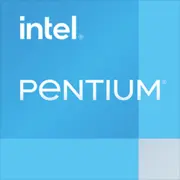Intel Pentium G4500T

인텔 펜티엄 G4500T: 2025년 사무실과 멀티미디어를 위한 예산형 프로세서
(2025년 4월 기준)
소개
펜티엄 계열 프로세서는 항상 수요가 적은 작업을 위한 저렴한 솔루션의 틈새 시장을 차지해 왔습니다. 2016년에 출시된 인텔 펜티엄 G4500T는 거의 10년이 지나도 특정 시나리오에 유효성을 유지하고 있습니다. 2025년에는 중고 시장이나 새 부품 잔여물에서 $50–70의 가격으로 찾을 수 있습니다. 16코어 괴물들 시대에 이 칩이 누구에게, 왜 필요할지 알아보겠습니다.
1. 주요 특징
스카이레이크 아키텍처와 14nm 공정
G4500T는 스카이레이크 아키텍처(인텔 코어 6세대)를 기반으로 하고 있습니다. 이는 DDR4를 지원하는 인텔의 첫 번째 프로세서이자 향상된 IPC(클럭당 명령 수)를 갖춘 제품입니다. 14nm 공정은 성능과 에너지 효율성 간의 균형을 제공합니다.
주요 사양:
- 코어/스레드: 2/2 (하이퍼 스레딩 없음).
- 기본 클럭: 3.0 GHz (터보 부스트 없음).
- 캐시: 3MB L3.
- TDP: 35W.
- 통합 그래픽: 인텔 HD 그래픽스 530 (최대 클럭 950MHz).
성능:
- 긱벤치 6: 701 (싱글 코어), 1260 (멀티 코어).
- 실사용 예시:
- VLC에서 4K 비디오 재생: CPU 사용량 ~30%.
- Google Chrome에서 10개의 탭으로 작업: 약간의 지연 가능.
- 가벼운 게임 실행(Dota 2, CS:GO의 낮은 설정): 720p 해상도에서 40–60 FPS.
특징:
- AVX2 및 AES-NI 명령어 지원 (암호화에 유용).
- 가상화 기술(VT-x) 지원.
2. 호환되는 메인보드
LGA 1151 소켓 및 칩셋
G4500T는 LGA 1151 소켓(버전 v1, 300 시리즈 칩셋과 호환되지 않음)을 사용합니다.
적합한 칩셋:
- H110, B150, H170, Z170 (스카이레이크/카비레이크용).
- B250, H270, Z270 (BIOS 업데이트 후).
2025년 추천 메인보드:
- ASUS H110M-K (가격 ~$60–80): HDMI 및 DDR4를 갖춘 기본 모델.
- MSI B250M PRO-VD (~$70–90): RAM 슬롯 4개, M.2 NVMe 지원.
선택 시 주의사항:
- 메인보드의 BIOS가 스카이레이크를 지원하는 버전으로 업데이트되어 있는지 확인하세요.
- M.2 NVMe를 사용하려면 B250 이상의 칩셋을 가진 메인보드가 필요합니다.
3. 지원 메모리
메모리 유형:
- DDR4-2133 (공식 지원).
- DDR3L-1600 (해당 컨트롤러가 있는 메인보드에 한함).
추천 사항:
- 최적 용량: 8–16GB (듀얼 채널 모드를 위해 4–8GB의 2개 모듈).
- 예시: Kingston ValueRAM DDR4-2133 8GB (~$25 모듈당).
제한 사항:
- 2133MHz 이상의 클럭 속도는 지원되지 않음.
- DDR5 및 고속 DDR4(예: 3200MHz)는 작동하지 않음.
4. 전원 공급장치 추천
TDP가 35W인 이 프로세서는 전원 요구가 매우 낮습니다.
시스템 계산:
- CPU: 35W.
- iGPU: 최대 15W.
- SSD/HDD: 5–10W.
- 메인보드: 20–30W.
- 총합: ~70–90W (디스크리트 그래픽 카드 제외).
팁:
- 예산 옵션: 300W 전원 공급장치 (예: be quiet! System Power 10, ~$40).
- 그래픽 카드 업그레이드를 위한 경우: 450–500W (GTX 1650 수준의 GPU 추가 시).
5. 장점과 단점
장점:
- 낮은 전력 소비 (HTPC 또는 미니 PC에 이상적).
- 4K/60Hz 지원 통합 그래픽 (HDMI 1.4).
- 2025년도의 저렴한 가격.
단점:
- 2개의 코어만으로 멀티태스킹이 제한적임.
- DDR5 또는 PCIe 4.0 지원 없음.
- 구식 아키텍처: 현대의 셀러론에 비해 IPC에서 밀림.
6. 사용 시나리오
사무 작업
- 문서 작업, 브라우저, 화상 회의.
- 예시: G4500T + 8GB DDR4 + 256GB SSD 조합은 MS Office와 Zoom을 처리할 수 있습니다.
멀티미디어
- Kodi/Plex 기반의 미디어 센터: iGPU를 통한 4K H.264/HEVC 디코딩.
가벼운 게임
- 2015년까지의 게임: 월드 오브 탱크, 마인크래프트, 리그 오브 레전드.
- 최신 프로젝트의 경우 디스크리트 그래픽 카드가 필요합니다 (예: GT 1030).
7. 경쟁자와 비교
AMD 애슬론 3000G (가격 ~$60)
- 장점: 2 코어/4 스레드, Vega 3 그래픽 (HD 530보다 강력).
- 단점: TDP 35W, 그러나 발열이 더 높음.
인텔 셀러론 G5920 (가격 ~$55)
- 장점: 코멧 레이크 아키텍처(2020), DDR4-2666 지원.
- 단점: 유사한 2 코어/2 스레드.
결론: G4500T는 LGA 1151 메인보드가 있을 때만 장점을 가지며, 그 외에는 예산형 신제품에도 뒤처집니다.
8. 조립에 대한 실용적인 팁
기본 구성 (사무용):
- 메인보드: ASUS H110M-K ($65).
- 메모리: 8GB DDR4-2133 ($25).
- 저장 장치: Kingston A400 240GB ($30).
- PSU: be quiet! 300W ($40).
- 총합: ~$210 (케이스 제외).
게임용 업그레이드:
- 그래픽 카드: NVIDIA GTX 1650 ($150).
- PSU: Corsair CV450 ($55).
9. 최종 결론
인텔 펜티엄 G4500T는 다음과 같은 용도에 적합합니다:
- 조용함과 경제성이 중요한 사무용 PC.
- 미디어 센터의 핵심으로서 (4K HDR, 스트리밍 서비스).
- 백업 컴퓨터 또는 터미널 조립용.
왜 2025년에?
이 프로세서는 멀티태스킹 요구가 없는 최대한 저렴한 솔루션을 찾는 이들을 위한 타협점입니다. 그러나 현대의 작업(AI, 스트리밍, 비디오 편집)에는 이미 부적합합니다. 예산이 허락한다면 AMD 애슬론 3000G나 인텔 셀러론 G6900을 선택하는 것이 좋습니다.
결론
펜티엄 G4500T는 과거의 유물이지만 열정적인 사용자나 경제적인 사용자의 손에 의해 두 번째 삶을 얻을 수 있습니다. 가장 중요한 것은 그의 한계를 명확히 이해하고 2025년에 2개의 코어로 기적을 기대하지 않는 것입니다.
기초적인
CPU 사양
메모리 사양
GPU 사양
여러 가지 잡다한
벤치마크
다른 CPU와 비교
소셜 미디어에서 공유하기
또는 링크로 소개하기
<a href="https://cputronic.com/ko/cpu/intel-pentium-g4500t" target="_blank">Intel Pentium G4500T</a>